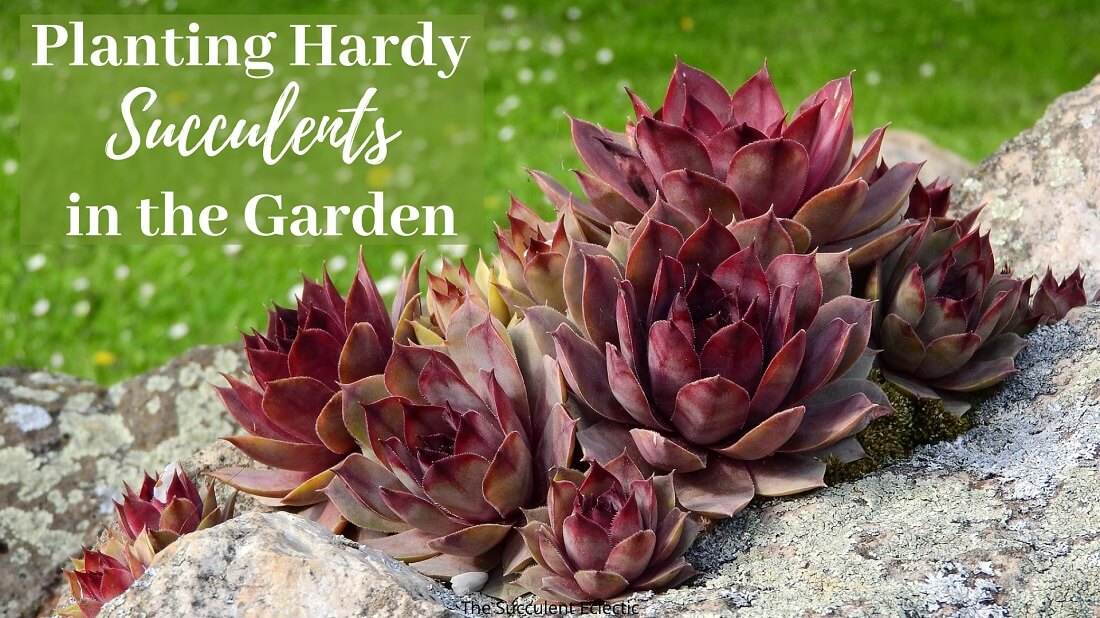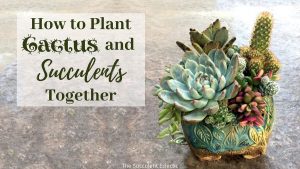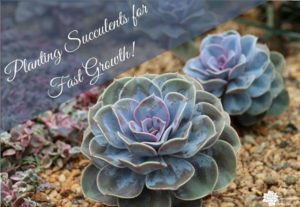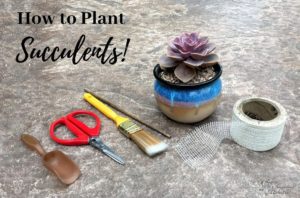It feels a little odd thinking about planting cold-hardy succulents in the midst of a summer heatwave. But that’s sort of the point of this post. When you plant succulents in the garden is just as important as how. If you need to take precautions to protect yourself from the weather — either because it’s too hot or too cold — it’s not the best time to be planting outdoor succulents, or any plants, for that matter. If you’re bundled up against the cold or protecting yourself from sunstroke, it’s a stressful time for transplanting. But it is the perfect time to plan what you’ll do next in the garden! And late summer/early fall is the ideal time to plant hardy succulents in the ground.
Why Hardy Succulents?
In this Post We'll Cover:
{Please note, some links in this post may be affiliate links to sites that pay me a small commission if you click on the link and make a purchase. This commission is at absolutely no cost to you. I only recommend products and companies that I have worked with and truly love! ~Kat}
Succulents in the Garden
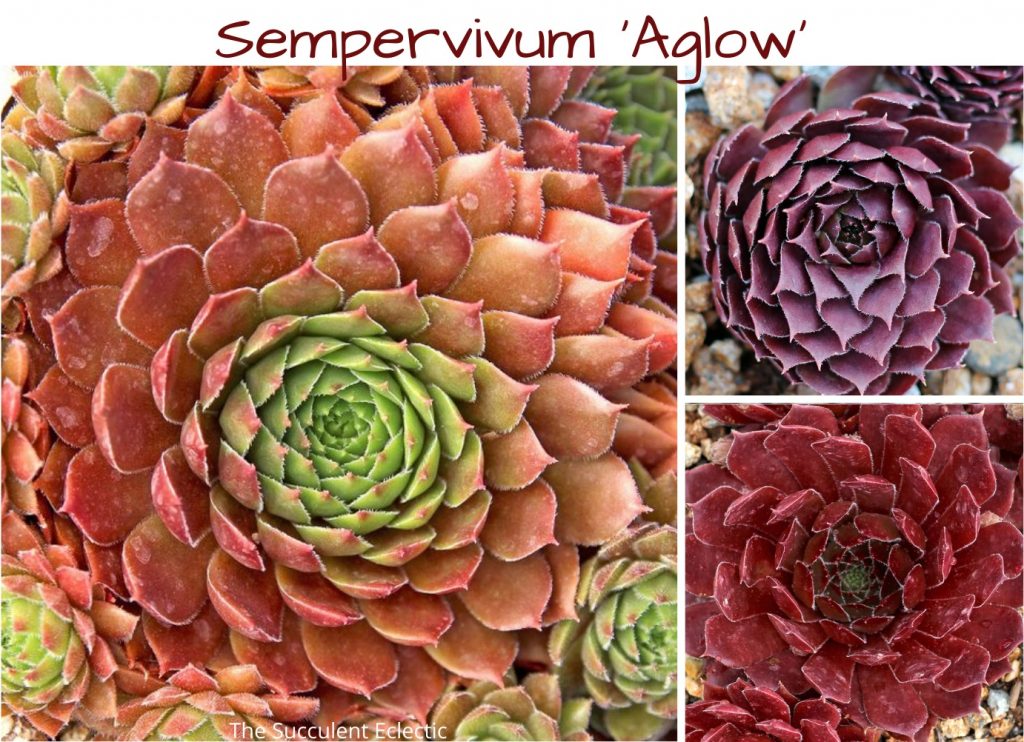
Hardy succulents have so much to offer. First and foremost, they can survive below freezing temps that kill most succulents. In climates that regularly see sleet and snow, you need to bring Echeveria, Kalanchoe, Graptopetalum, Haworthia, and more indoors to overwinter and protect them from the cold. Not so for hardy succulents like Sempervivum, Jovibarba, Orostachys, hardy Sedum, and the like. These are succulents for the garden that can be planted in the ground and left in place year-round. Some can even photosynthesize right through the snow cover. Others die back to the ground in winter, coming back bigger and better each spring.
To survive and thrive in a climate with such extreme temperature fluctuations, outdoor succulents must develop protective pigments that act as an “antifreeze” in winter, and that sustain and protect them in summer. The result is a colorful and changing display throughout the year. Above, you see the colors of Sempervivum ‘Aglow’ as it responds to the warming and cooling of the seasons. Gorgeous! Most hardy succulents offer a wonderful range of colors and textures for the garden.
You’ll discover an array of hardy succulents for the garden that can fill a number of different roles. Low-growing Sempervivum, hardy Sedum, and Orostachys make exceptional succulent groundcover. They’re also highly effective in rock gardens, retaining walls, and trickling through dry stream beds. Taller varieties, like Sedum telephium ‘Autumn Joy’ make a handsome border plant with 3-season interest. Others, like the colorful Opuntia ‘Pinta Rita’ form living fences and hedges. Consider what your garden needs and how you can meet those needs with succulents!
Choosing Hardy Succulents for the Garden
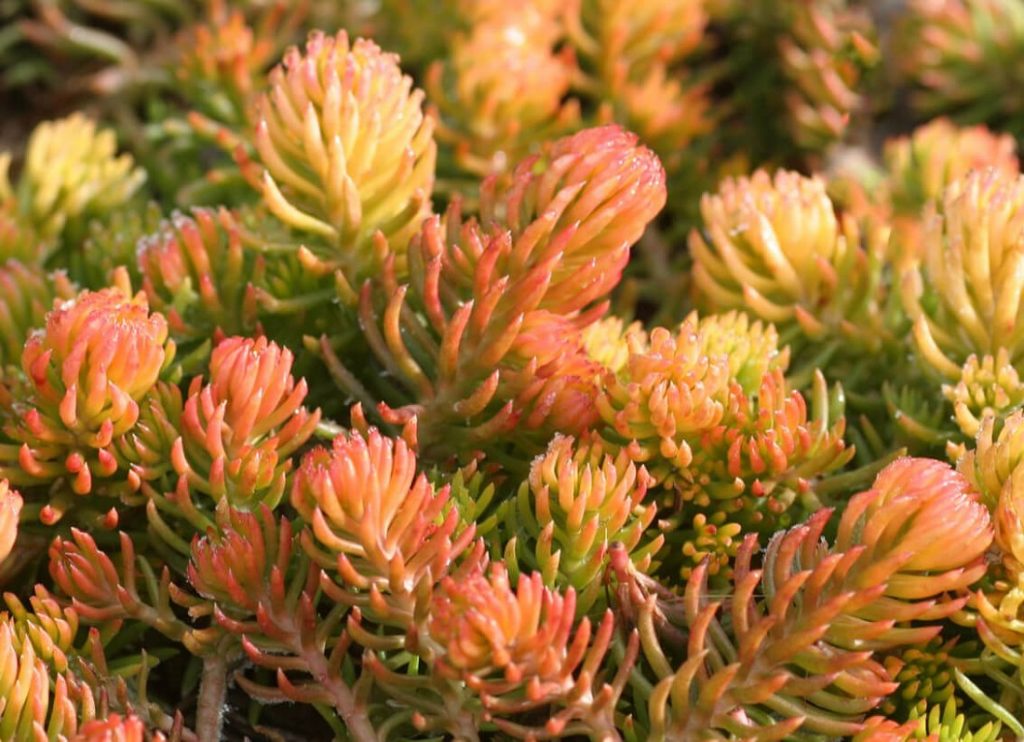
Before you get lost in exploring all the colors and textures of cold-hardy succulents, be sure you understand both your climate and how to use winter hardiness zone information. Figure out your climate zone and choose succulents for the garden that are hardy in that zone. If you garden in zone 6, a succulent that’s hardy to zones 6, 5, 4, or 3 will survive your winter and be actively growing the following spring.
The most important consideration for succulents in the garden is the zone hardiness. Once you have that covered, look for varieties that suit the location you want to plant in. Do they take full sun or partial shade? Do they grow just 3 inches tall or up to 12 feet? Then, consider what time of year the succulent may go dormant. You may want to mix summer- and winter-dormant succulents in your planned site. We often overlook flowers when we look for succulents, but succulents are some of the finest flowering plants for the garden! Fanciful blooms and the colorful, winged pollinators they attract add a whole new layer of interest to the garden.
When to Plant Hardy Succulents in the Garden
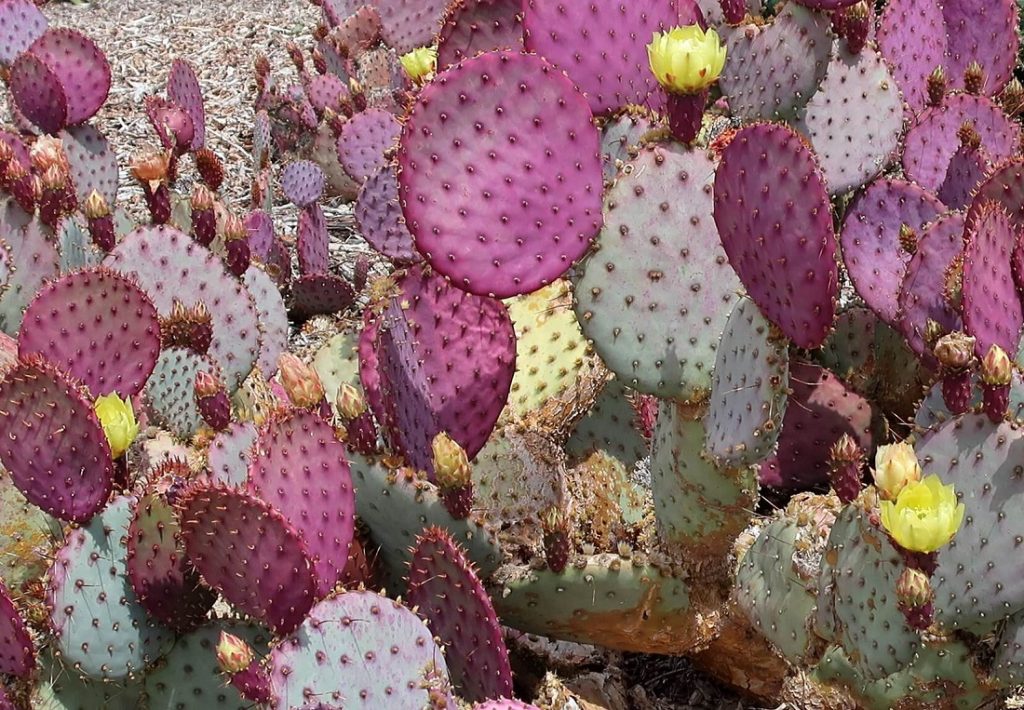
We ask for a lot of hardy succulents. We want them to thrive in hot summers and cold winters and look great all year. Many are expected to grow in climates that experience more than a 100-degree (Fahrenheit / 50 degrees Celsius) difference between summer and winter temperatures. To get them off to the best start, timing is critical. Like most things about succulents, this cannot be determined by the calendar. Instead, look at the conditions in your garden.
Late summer or early fall is the best time to plant hardy succulents in the garden. Just after the high heat of summer breaks and the cooler temps of autumn are on the way. In some parts of the U.S., this means late August. In other parts, late November. In some parts of the world, it may be March. Judge the conditions in your garden and adjust accordingly. For best results, plant outdoor succulents in the ground at least a full six weeks prior to your first ground freeze. More than size weeks simply gives them more time to acclimate, become well-established, and grow.
Fall is a period of active growth for all succulents. Planting hardy succulents in the garden after the heat of summer has passed gives them warm soils to establish their roots. Gradually cooling conditions signal the succulents that winter is coming. They build up their protective pigments and establish a robust root system. This is how they become fully prepared to meet the challenges of the winter ahead.
Best Soil for Succulents
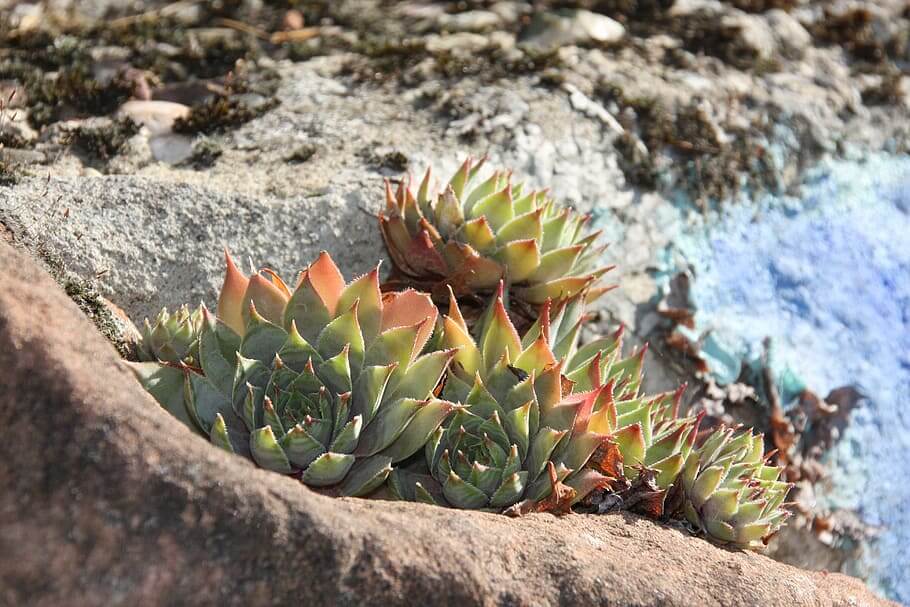
Succulents are native to habitats with loose, nutritionally poor soils. The soils have a lot of coarse sand and gravel and are low on organic matter. The large, irregular particles of the soil don’t fit tightly with one another like they do in a clay-based soil. Instead, there is plenty of space between the soil particles for water to quickly soak in and drain away from the succulents’ roots. These are the conditions that succulents evolved to thrive in. The secret to healthy plants is mimicking as closely as possible the conditions they have adapted to.
When planting succulents, always (always!) use fast-draining succulent soil. When planting in a container, it’s easy to use a cactus mix. But how to know if the soil in your garden is well-drained? Just dig a hole roughly 12 inches deep and wide (30 centimeters). Fill the hole with water. If the hole empties within 10-12 minutes, you have fast-draining soil and the succulents will love it! If it takes an hour or more to drain, you’ll need to work in a lot of amendments to improve the drainage. If the hole drains in about a half-hour, the soil drains well and can be easily improved for the succulents.
Improving Drainage for Succulents in the Garden
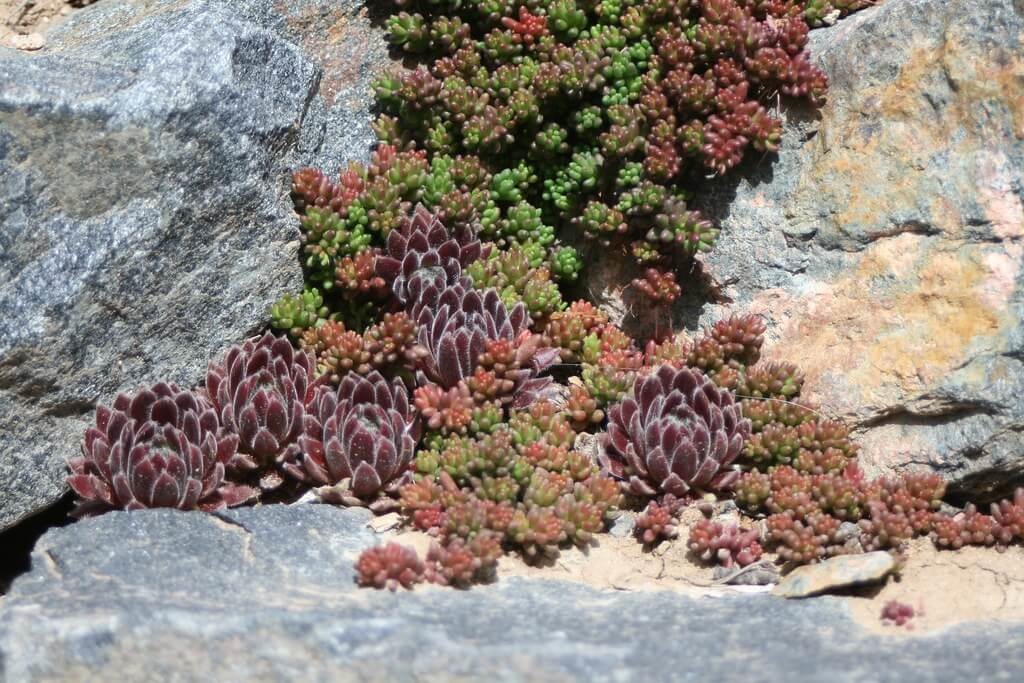
When planting succulents in the garden, fast-draining soil is an absolute must. You can improve your soil drainage in a few different ways. The quickest and easiest is to plant on a slope or to create a raised bed. In the photo above, hardy Sedum and Sempervivum spill out between large boulders. Start with a plot of bare ground in the garden. Remove all the weeds. Then, add lots of well-drained soil on top of the cleared earth. For a simple raised bed, add 6 inches of soil and level it. For a more natural appeal, mound it up and add in some rocks or boulders as you create additional levels for your rock garden. Plant the hardy succulents in the crevices and open spaces you have created in the raised bed and between the rocks and boulders.
Instead of planting on a slope or creating a raised bed, you can amend the soil to improve drainage. Break up the soil to a depth of 6 inches and remove any weeds — roots and all. Using a shovel, rake, or trowel, work in amendments like crushed granite, pumice, pea gravel, or even coarse builders sand. (Do not use beach sand or fine sand!) Blend these ingredients with your garden soil until you have an even mixture. Then — you’re ready to plant hardy succulents in the garden!
Do your succulents a favor and work some dry worm castings into the soil before you plant. Worm castings are a wonderful organic fertilizer for succulents. But the best value is the way worm castings prevent insect infestations for your plants. Figure about 4 tablespoons per square foot, and work it into the prepared soil.
How to Plant Hardy Succulents in the Garden
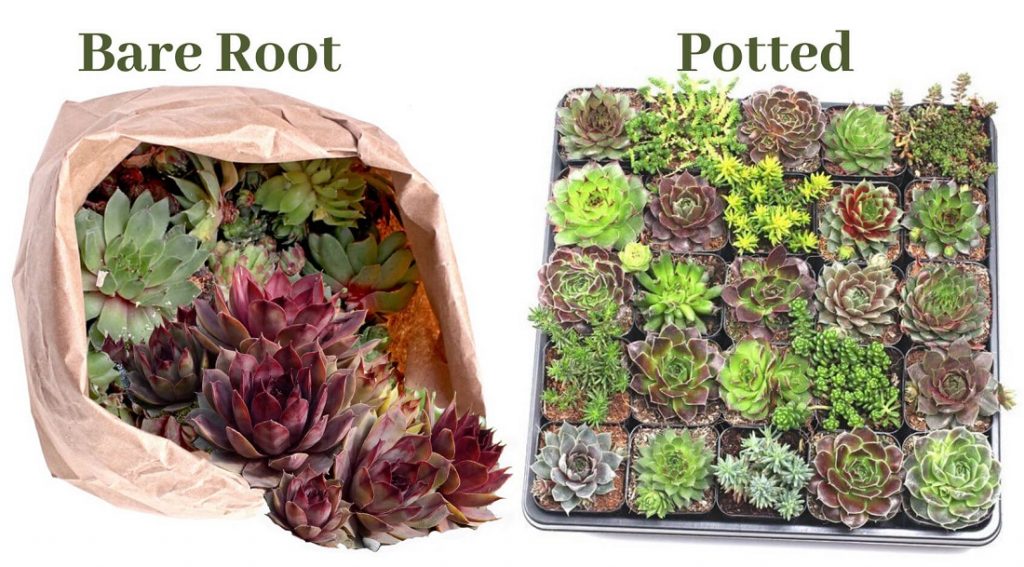
When you purchase hardy succulents for the garden, you’ll choose either bare-root plants, plugs, or potted. Typically, bare-root plants and plugs are less expensive than potted succulents. But you’ll find some great wholesale deals on hardy succulents that bring the price down on the potted plants. Any of the three is a great way to go for planting succulents in the garden on a large scale. The planting technique is slightly different for each. Bare root plants arrive without soil. Their roots are truly “bare”. Simply dig a small hole into the prepared soil. Fan the roots out and down into the hole, leave all leaves above the soil line. Backfill with the loose soil you dug and firm it into place.
With plugs or potted plants, it is important to gently break up the root ball. The roots have long been confined, and we want them to spread out and down into the earth. That way, they will root into the surrounding soil matrix and acclimate the most successfully. Be gentle but thorough in teasing the roots apart. There will be some breakage but try to keep it to a minimum. Then, dig a small hole to accommodate the root structure. Spread the roots out and down, then backfill with the loose soil. Again, be sure that all leaves are above the soil line. Maintain the same soil line as in the plug or pot.
Allow sufficient distance between plants to allow for their mature size. Once you have planted the hardy succulents in the garden bed, whether you started with bare root, plug, or potted plant, give them 3 days before watering them in. This allows the bruised and torn roots to heal at their surface first.
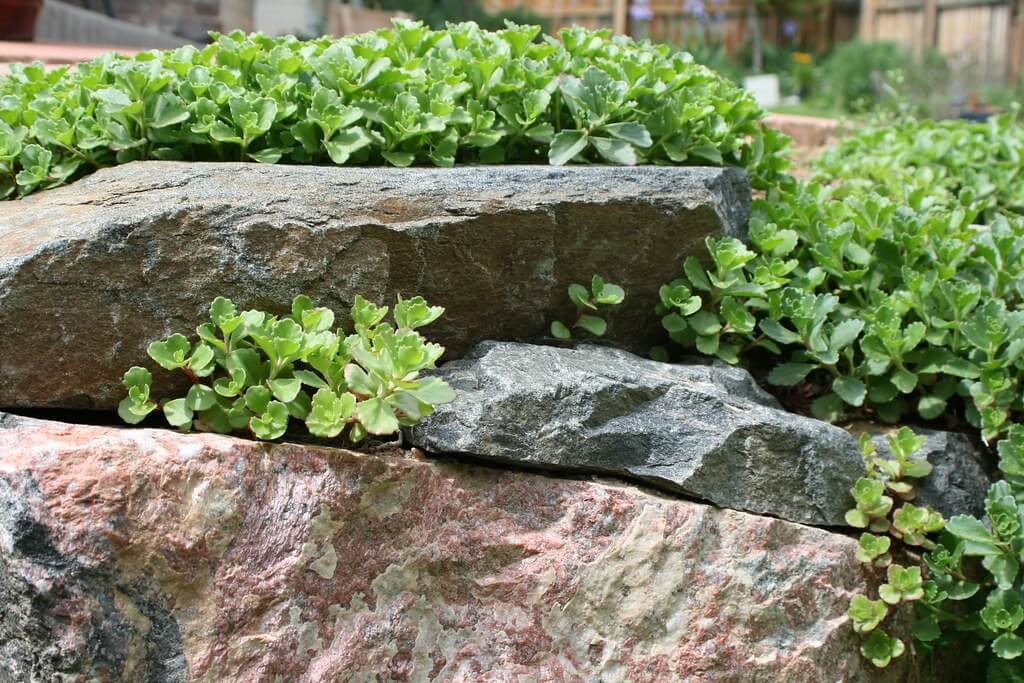
Now you know all about why, how, and when to plant hardy succulents in the garden! So… will you? I’d love to know! Please take a moment to leave me a comment and let me know!
Stay safe, stay sand, and plant succulents!

P.S. Please subscribe and enjoy my FREE course, 7 Steps to Succulent Success. Thanks so much!
P.P.S. Why not join my Facebook Group for succulent lovers? We talk about succulent care, propagation, succulent identification, and design. It’s a warm and welcoming group that would love to meet you!
